Are You Ready (For the Country?)

Boats wrote me this morning to beat me up, saying: “I am a bit bewildered by your basic attitude towards pasturage. You’re paying thousands for, and hundreds in maintenance coasts for basically a mechanical small sheep or goat herd.”
“To the non-urban mind, pasturage is not a big lawn, but a productive asset.”
“You can plow it up for crops or leave it to grow tall for fall hay, or use it to feed livestock. Especially sheep. That doesn’t mean that every gentry farm under ten acres has to have sheep and goats or even a crop out in the field that you gentry farmers have to tend yourself.”
Boats is right, of course, and I take no umbrage in his point. At the moment I am a dilettante, and still splitting my time between here and there, and the animals would require supervision as much as I do.
I became enamored of the idea of a country property in the time after 9/11. Professionally, I was engaged in the establishment of alternate locations for the Government to continue operations in the event of some catastrophe in the National Capital Region, and concluded my government career attempting to deal with some of the more horrifying possibilities.
I looked west, to Loudoun, and Clark County, though all those properties seemed to contain decimal points in the asking price. I looked for several years until I finally got down to Culpeper. The real estate market had tanked, the price was right, and the place was reachable even on foot from Washington, if you had a couple days and were fairly determined.
I liked the farm for a variety of reasons, but one of them was the existence of the bunker dedicated to the Federal Reserve’s continued existence- there was rumored to be a stash of small bills on pallets in the range of $6 billion- to restart commerce after the nuclear exchange with the Soviets.
Anyway, the farm was intended to be a safety valve against the unthinkable, and now it is something else, and likely to be my version of the Alpine Redoubt.
Boats comes at this from a real country perspective, and he said that “My Uncle Mel lived on 88 acres of seriously farmed and ranched land in St. Tammany Parish an area of suburbs, mini farms, golf resorts, decorative plant nurseries, and a few remaining and deeply entrenched “farmers” who were really agribusiness men. Uncle Mel ran Black Angus Beef on his property, kept about three fish ponds, and put about 20 acres each in various crops each year.
“As a farm unit those acres put his five kids through college in style by selling off each kid’s Back Angus herd (each kid received a breeding pair at birth). The 20 ACRES of crops were pretty much a wash since he owned his own tractors, plows, combines, and other harvesting machinery. However he never expected to make any money out of the farm. He borrowed against it to buy the machinery, which he turned into a business servicing farmers with more acreage but no investment in equipment.”
“With parts of the larger farm and forest holdings being converted into suburbs in the 1950s-80s he bought two bulldozers as well and created a business doing site prep for the incoming suburban sprawl. For the remaining serious farmers in the Parish, he opened a feed store way out in the country where the gentry didn’t usually tread.”
“It did well. When the gentry began to get a bit closer he opened a tack-and-saddle shop for the horsey set, who were moving beyond the 10 acre mini farms and buying some of the outer acreage of the big farms in 100 acre increments to erect barns, pasture horses and have their own bridal paths and riding rings. And indoor arenas, of course.”
“When the thoroughbred horse industry arrived, he partnered up with agribusiness farms doing mechanized support to their giant holdings for raising feed grains, and things unique to Louisiana like indigo as cash crops on what would have otherwise been surplus acreage.”
“Uncle Mel would describe himself as a “dirt farmer and sometimes contractor”. His “poor losing farm” was an endless source of tax deductions and security for capital loans for his “hair brained” small business ideas like a store in the “middle of nowhere.” “
“His business case was to leverage his farm to purchase more agra machinery than would be necessary on his little spread, and “share crop” with big time race horse owners and the industrial farms. The bank always wanted those 88 acres because they were only six miles from the Parish seat of Covington on high rolling ground with big oaks and pecan trees and right in the path of McMansion type suburban development.”
“That’s why they never held Uncle Mel to business plans and other MBA-like stuff before agreeing to lend him croaker sacks of money.”
“They never got it. Uncle Mel just continued to observe and fill the needs of the new city escapees, and the old farm families that remained. He died a multi millionaire but rarely paid the IRS a dime, legally. I shudder to think what he’d say about spending serious money on a giant lawn mower absent a hay baler.”
“How did all these people in the parish get to know Uncle Mel when he wasn’t much for country clubs, cocktail parties, or socializing generally? The County (Parish) Agent, every country in American has one. Everybody from the old farmers to new suburban developers would contact the county agent at one time or another with a problem that Uncle Mel could solve for a reasonable price. You couldn’t buy better advertising, hell, the county agent was like an advertising service and better business bureau endorsement warped into one. Your county agent can help you find the “Uncle Mels” in your county who can help you turn those idle acres into something productive without you actually having to get behind the plow.”
“All “share cropping” arrangements are not between patron and peasant, or between and among the poor. All those participating in modern day gentry farm “share cropping” arrangements” are not struggling and many are not only profitable but provide wonderful tax shelters as well. If you find the “Uncle Mels” and pay close attention you can become an “Uncle Mel”….though you’ll probably never wear a Stetson, roll your own, light your match for your “smoke” off your grizzled face, or sit a horse as well.”
“But just because you’ll always look like gentry doesn’t mean you can’t think like an arga business / exurban developer. The first step is to get to know your county agent and get him to lead you to the local “Uncle Mels.””
“Really, mowing real pastures as if they were a lawn. If I, or one of my cousins did that when Uncle Mel was still above ground he would have shot us “in the tail with a pack of tacks” his favored threatened form of ultimate discipline. A mechanical goat……you were too long inside the Beltway!”
I took the point. I looked up the Virginia Cooperative Extension System and identified the office in downtown historic Culpeper, conveniently located near my go-to java house The Raven’s Nest.
I drove into town, thinking about the bent shaft on the tractor- the mechanical goat, as Boats calls it- and decided to stop for a big cup of Dead Man’s Reach coffee. It is the 100th anniversary of the Smith-Lever Act, which officially established the National Cooperative Extension System. It is going to be a heck of a centennial; of which I intend to participate with the staff of nine at the office.
Here is part of what I learned already:
Top quality dairy and horse hay, large square bales, good grade at $146/ton, alfalfa orchard grass large square bales, good grade at $141/ton, orchard grass large square bales, premium grade, $154 – 164 per ton. If you buy small square bales of these good and premium grades just mentioned, expect to pay another $100 per ton.
So, there is that, and what comes out of the ground all by itself can be turned to good advantage. Country stuff is good for you, if you stop by the Extension office. My Shenandoah correspondent recommends some simple solutions for dilettantes like me with too many vehicles on the property and a lot of insects to deal with:
We found that when a vehicle sits for a while, the local field mice love to chew wire and set up housekeeping. They especially love the air filter for food storage.
Kryptonite for Kritters
Get essential mint or peppermint oil (health food store – must be all natural).
Liberally apply to pieces of cotton rag or cotton balls.
get some of those 2-3 oz lunch box containers to put the soaked rags/cotton balls.
Punch holes in the lid and fill.
Put several in the engine, trunk and interior of the stored vehicle.
Or, old fashioned moth balls do the trick too. They just don’t smell as good as mint.
Organic Weed Killer
One gallon white vinegar – heat up on stove – do not let it boil, just good and hot
Pour 2 cups Epsom salt in to the pan – make sure salt dissolves completely after mixing it up
Remove pan from stove and let cool to room temperature
After it cools, pour into sprayer
Add 1/4 cup liquid dish detergent
NOTE:
The only thing I don’t like is that you really have to spray a lot, but it does kill the weeds and makes the ground so acidic nothing grows for quite some time. Next year, I’m going to try a watering can instead of a sprayer! May even resort to straight white vinegar.
Copyright 2014 Vic Socotra
www.vicsocotra.com
Twitter: @jayare303
What the Doctor Ordered
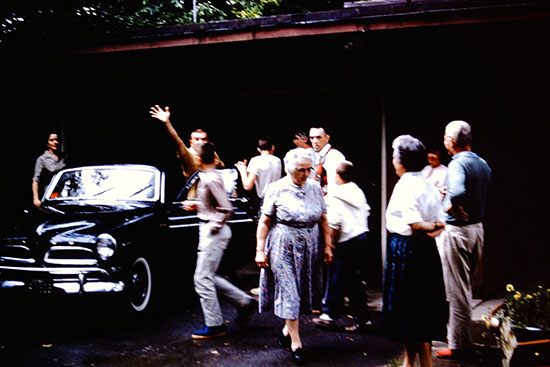
(Whatever was happening here- possibly the departure of Famous Bomber Pilot Dick and his entourage from West Webster, NY- apparently left Grandma cold. There are many many better pictures, but this one is a study in ambiguity. Left to right, Rocky, Dick, Burr, Marshall, Grandma, Jim, Vic, Rhoda, Betty and Ted. Check the car. Dick always had a great and powerful ride).
Sleep is just what the Doctor would order, if I had a Doc. I am not sure where I stand with all that stuff- I think I purchased that addendum to the basic TriCare coverage left from the military- but don’t know for sure. It is one of those things I was meaning to get to and just haven’t.
I don’t have files any more- I have stacks of stuff at the farm and used the secure trash at my former office to get rid of as much stuff as I could at the time of the move last summer, but like the company health plan, that is all long in the rear view now.
I am determined to get organized down here now that I have more time than money, although I have to say the money is burning itself at a merry rate. Long story to that, which I will make mercifully brief.
I bought the tractor so I could cut my lawn, and over time, save on the cost of keeping the property look tidy. The Tiger is unfortunately hors de combae, and is going to have to go to the shop to repair a bent blade and impellor shaft, and that means I can’t cut the grass on the pastures, and had to re-engage Frank the Landscaper to cover the gap, while the Tiger has the tracks and main armament repaired.
Frank and his buddy do a great job, but stuff happens, you know? I was down in the garage moving crap around. I had the JG’s Explorer fired up and backed out and was considering what I had to do with the Syclone- it has not been run since before Christmas and that ought to be bubbling up on the list of things to do- when Frank’s guy came by the open garage door cursing softly. “Goddamn door- Second time! Picked up a rock and smashed it. Just like last time!”
Considering the depth of some of the recent issues- matters of eternity and of the ways of he human heart- I can take broken tractors and shattered glass with a certain amount of equanimity.
The three of us conferred about the likely course of action. Frank saw most of his profit go away for this session, but he will make up for it with the charge for the Round Up that will knock down the ivy and grass coming up through the gravel on the circular drive. I noticed that a board had warped and pulled off the nails to the post by the back gate- I resolved to fix that, since I have a cordless drill and some long screws, but that meant moving furniture to get at the ammo can where the nails and fittings are stored, and then that meant moving the golf clubs and the boxes of slides and that meant opening up the office annex and that meant confronting more crap, and then moving that and charging the battery for the drill and realizing I had not seen the claw hammer to pull the nails and well you know how all that goes.
You always find stuff in the last place you look, and based on when and how the crap in the garage arrived, it is either stuff from the Paleozoic period of Mom and Dad’s basement or the stuff so personal that the Realtor sternly told me to get it out of the Condo in order to sell it last summer. I got used to living in the unit when it was pristine, prepped for sale, and when I moved out to the rented apartment all I had was the elegant stuff with everything else piled up in decidedly non-elegant piles at the farm.
Spare and elegant is just not my style.
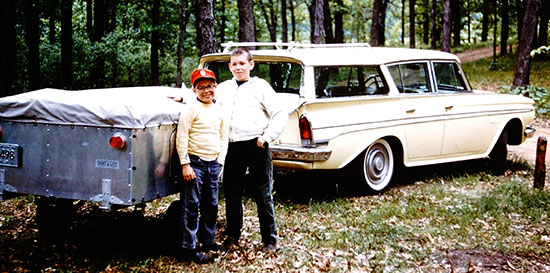
I just finished processing all the 35mm slides that I have uncovered so far, about a thousand or so, plus another thousand I paid to have done back when I had more money than time.
The latest batch were coverage of Raven’s wanderings on the Continent some fifty years ago, family activities at the cabin, carrier qualifications on the USS Antietam (CVS-36) in the Gulf of Mexico, Grandma Socotra’s 80th birthday in New Jersey and that bizarre visit to the Parrot Jungle, a Miami attraction, in 1960.
It was just what the Doctor ordered to get over my musings about life and death and eternity, and looking at the images of so many family members who have gone on fit the mood.
Uncle Jim puffing on a smoke- Dick he Famous Bomber pilot in his prime and my Aunt, Mom and both her sisters- Dad at his drafting table. Two cousins who have gone on. All departed, and I marveled at the size of the crowd gathering at the Big Fleet Landing on the other side. Maybe that is why I was so feverishly scanning the Kodak images- to share now while someone still gives a shit.
At length Frank and his buddy had cleaned up the glass on the front porch, the board was reattached to the fencepost, the Explorer was charged up and put back under cover and the office secured. I was looking around at ideas about dinner when Miss Vickie called and said the maids would be at the unit up there today, which means I have to beat them there and write a check and ensure there is a modicum of order.
Whew. In sum, it was chaos at the farm, and a couple potentially expensive set-backs.
But you know what? It is all fine. And sleeping through the night in the country is just what the Doctor ordered. I am done scanning slides. Now, about those four boxes that have “pictures” scrawled on the side.
There is all summer for that.
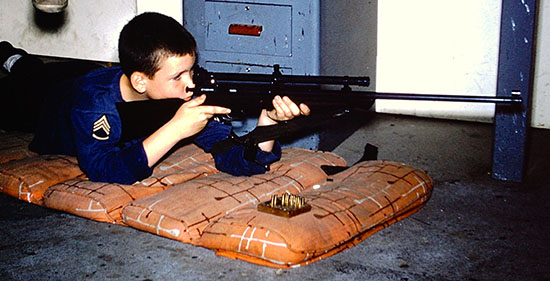
Copyright 2014 Vic Socotra
www.vicsocotra.com
Twitter: @jayare303
Fair Winds
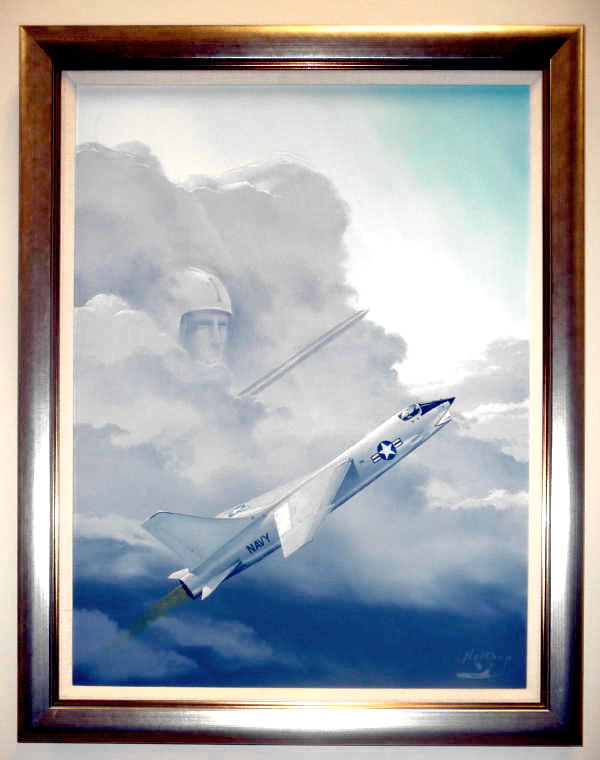
(“First Flight” Painting by artist Bill Northup courtesy the F8 Crusader Association.)
I am waking this Cinco de Mayo at the Farm. I was scanning slides last night, half watching the television and half lost in a reverie. I like the soft pace of a Sunday night here, and the human-scale problems of attempting to hold back the forces of entropy on the little and well-defined property for which I am responsible.
There is so much out there that is beyond any influence we can exert, and the loss of our pal Mr. Sluggo puts that front and center.
Kenneth Scott Bates, CAPT, USN-Ret, aka Scotty, aka Mr. Sluggo, was a buddy for the ages. A tough guy, F-8 pilot originally, F-4s when I met him in VF-151. He was the Squadron Maintenance Officer, and Fleeted Up to be acting XO as the senior LCDR Department Head when the Skipper detached and the XO relieved him with a gap in the pipeline.
That was, of course, while our little crew of pirates was embarked in the tumultuous and turbulent segment of the long life of the Midway Maru.
There was a cast of characters in that outfit. The call-signs still resonate down the years. Rocket, Splash, Snidely Whiplash, Space, Hooch, Barnyard Big Bucks and Bronco. We were lead by our fearless leader, Rattler the MiG killer. Our dauntless Maintenance Officer, the individual responsible for keeping the ancient jets flying was Mr. Sluggo. We were in the Indian Ocean on our way to trouble or boredom and we didn’t know which.
It happened during one of the afternoon flight events. Big Bucks and Chief launched and had a hydraulic problem almost right off the cat. Bucks did the right thing and tried to blow everything down, landing gear, flaps and hook. Problem was that only one of the main mounts came down. This was not good.
Resolving the problem took another five hours of intense conversation. Mr Sluggo was in the middle of it all. The rest of the airplanes were recovered to let the Boss figure out how to get Bucks back home. There was some touchy refueling and a lot of looks at the back of the boat to see if they could get the jet back aboard. Bucks and Chief, his RIO, went round and round the boat trying to get the right main-mount to come down and not making it happen.
They talked about erecting the barricade, the big nylon mesh net that stretches across the flight deck. The object was to crash the jet onto the deck and capture it as it slid out, even if the hook did not engage one of the wires.
But the big Phantom was just too fast and the emergency blow-down of the flaps didn’t lock them down in the lowered position and they crept back up and the airplane just kept getting faster and faster. Despite the jerking and jinking, Bucks could not get the stuck wheel to come down. Lack of hydraulics meant he couldn’t raise the other one. So he was stuck. A pancake landing on the belly tank like Old Mean Bud did at the field at Misawa was out of the question, too.
Scotty conferred with the other senior aviators on what to recommend. There was another problem with the barricade. If the airplane hit it too fast it would rip it off the stanchions and out of the deck and then wrap itself around the cockpit and the airplane would keep going and dribble off the angle deck and into the water with the guys unable to eject.
They tried everything as afternoon turned to evening and then to black night. They put max power on the ship and we raced along as fast as we could go into the strongest wind we could find. Bucks lined it up for multiple passes to see how slow they could get the Phantom to come over the round-down and into the landing zone. They just couldn’t get it anywhere near slow enough.
The CAG couldn’t send the guys ashore since there was no shore. We were truly Blue Water, a term by which we meant that there was no home but the ship, no alternative except the pitching deck in the black-ass night.
We were somewhere near the Four Degree Channel in the Maldives. There was an old Brit field at Gan, but we were not exactly friendly with the locals and giving them a perfectly good fighter was not something the grownups wanted to do. So they decided to throw the airplane away and save the crew, if we could.
Bucks put the airplane in a big race track and they positioned the helos. We all were out on deck or in the catwalk watching. Chief pulled the handle and ejected on command abeam the ship, about a half-mile out. The swimmers from the helo squadron got him almost before he got wet. Then it was Bucks’ turn, driving a big convertible jet with the top gone. He got abeam the ship and then pointed it directly away. He clicked in five degrees nose-down and then pulled his handle and left the jet.
Bucks had a good seat and a good chute and that part of things were going very well. We watched the jet as the pressure of the wind on the left landing gear made it turn around in flight, almost coming back toward the ship. For a moment it looked like we might have an unmanned kamikaze and our guided missile cruiser USS Worden (CG-18) thought she might have to engage the airplane, which would have been pretty spectacular. But the nose-down attitude did the trick and the F-4 went into the drink well off the stern.
They had a little problem finding Bucks, but he was OK and walked into Ready Room Two about twenty minutes later. The Flight Surgeon gave him one of those little bottles of whiskey they maintain as medical supplies. Not that there wasn’t plenty more where that came from, locked away in the little safes in the officers staterooms. As Mr. Sluggo said, “If they expect me to fly at night, I expect to have a glass of scotch when I get back.”
Thereafter, Scotty did the paperwork required when you misplace a major item on the Squadron property book, and we did our part in the Iranian Hostage Crisis, among other things, and stayed in touch thereafter, and socializing regularly once we eventually fetched up in the DC area. By that time, Sluggo had bailed for the path of Acquisition Professional, made 0-6, and retired to ply his arts in the Defense Contracting world, supporting Army aviation.
He was an avid golfer, and a member of the Fun Bunch at Army-Navy Country Club, immersed in the complex (if Byzantine) world of the Golf and Green Committee.
I had lunch with him in mid-March. He was in between chemo cocktails and able to sit up and take nourishment, and we chattered on about the significance of the disappearance of the Malaysian airliner and laughed about times old and new.
He was a little gray, but still larger than life. We agreed to get together again in May.
I was doing something unimportant on Friday when I got a note from a pal who informed Scotty’s extended network of pals that he was on life support, and the family was gathering to make some big decisions.
I was stunned. He had seemed completely phlegmatic about the course of the cancer. Apparently the cocktail did not work, he went swiftly downhill, and while in hospital fell out of his bed and struck his head, apparently seriously.
They tell me he departed just after midnight, Sunday morning. His last pass was peaceful.
I talked with his lovely daughter Kimberly late yesterday. Scotty was a West Coast Fighter Guy, so there will be a lot of folks coming this way for what I have come to know as the two-part Arlington drill: a memorial service while the memory is still fresh and raw and sometime later, when the Old Guard at Arlington has the resources- perhaps a couple months- the formal service at the National Cemetery.
I completely realize that the survival rate for this life experience is exactly 0%, but I am still taken aback and sobered. We have lost a Great American, and I am going to miss him a lot. The world is a little smaller this morning, and I think you can understand why.
Fair Winds, and following seas, Mr. Sluggo. We will see you on the other side.
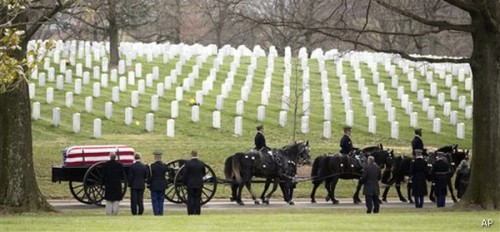
Copyright 2014 Vic Socotra
www.vicsocotra.com
Twitter: @jayare303
A Day at the Races
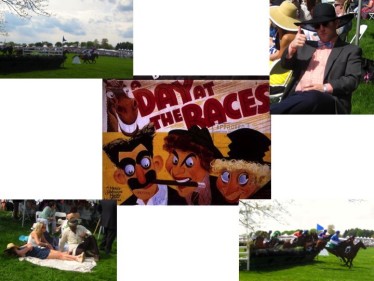
I missed the last two editions (87th and 88th) of the Virginia Gold Cup, the celebrated steeplechase held at Great Meadow near the village of The Plains in the piedmont horse country.
I had my reasons. Two years ago I was up in Michigan, trying to clear out my parent’s house in preparation for its sale, and deferring surgery on a damaged leg. Last year I was doing something else, and still limping. This year, with so many changes imminent, might be the last time the convenience of the University Row bus-and-buffet-and-bar tent is handy. So the Willow Crew went to Great Meadow for the 89th edition of the Virginia Gold Cup.
There was some apprehension over the state of the track (and more importantly the turf around the tents on the north side of the rail) due to the penetrating rain of the last week, and Saturday dawned gray and cloudy.
As the morning wore on, the skies cleared and generally blue skies, pleasant temperatures, and dry conditions that mitigated the mud of last week. We rallied in the corridor outside of the Rock Bottom Brewery at the Ballston Mall, the hub of the University Row operation that provides bus transportation and peace of mind for revelers of the Races.
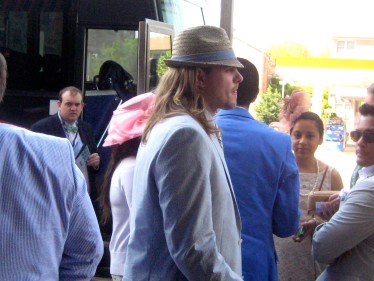
The crowd tends to run young at University Row- the bulk of the crowd being recent grads of the fourteen “Anchor” Schools and the forty-nine “Partner” schools that sponsor the buses and tents and food and booze. It is pretty slick- the Martz buses pull up outside the white picket fence that surrounds the tents, and the rail provides a marvelous view of the fence on the northwest rail.
But of course, it is about much more than fashion. University Row sold out it’s allocation of tickets, and three waves of buses carried the crowd from Arlington to bucolic Hunt Country. I had my press pass jammed in the band of my straw hat, and had the opportunity of interviewing one of the founders of the Row on “deep background.”
He asked who I wrote for, and I told him. He nodded as if my explanation made sense, and described the early days of the Row. This is all a Great Meadow phenomenon. I did not get to Washington until 1986, two years after the urban encroachment at Broadmoor Farm up in Warrenton forced the relocation of the Gold Cup to Great Meadow.
It had been a near thing- the property was slated to become a new tract development for 500 homes. Now, the land is in conservancy and features the steeplechase course dotted with ponds, water jumps and fences. Now, the complex features steeplechase races starting the first Saturday in May, as well as the International Gold Cup Races to close the season in late October. During the summer there is Saturday night Twilight Polo and the Twilight Jumper series on select Friday evenings.
It is a grand place, and a continuation of a regional tradition that goes back to Jefferson and Washington bringing their ponies to compete for a cup. The Row tradition is much more modest. The First weekend in May usually brings out the pent-up energy deferred by the dog-end of winter, and the Gold Cup meet is as much about fashion and seeing and being seen as it is about the races. In fact, you could call it the Festival of Women’s Hats as well as you can call it a steeplechase- and a celebration of the Uber Preppie look for the guys.

We embrace the fashion: TLB, Joy and Jamie were dolled up in floral spring dresses, Kevin Uno, K2 and Five Hour Energy Mike went prep casual. Jon-without and I went in a different direction. I normally wear my seersucker suit, white bucks, straw hat, bow tie and braces. Jon-without took a similar approach with a J-Press straw boater atop a pattern jacket and go-to-hell slacks. We were working the bar line when the impromptu history of the Row spilled out.
The College of William and Mary had arranged for a tent on the rail back in the late 1990s. They happened to be located near a similar tent rented by Virginia Tech Alums, and were separated by one from the venerable University of Virginia. For whatever reason, the Cavaliers didn’t show, and the lines between the tents blurred. W&M had a keg and Subway sandwiches, the Hokies had an open bar and catered food, and one thing led to another.
The current spectacular spread is the result of more than a decade of refinement, and the addition of dozens of additional alumni associations, including mine. The waggish current leadership- who were not interviewed for this article- placed the University of Michigan adjacent to The Ohio State University. Despite and open bar all afternoon, there were no casualties.
Plenty of food to go along with the open bar moderates the more extreme behavior- at least most of it. Some folks did have to take little naps by mid-afternoon, but the Willow Gang was on our almost best behavior. We even took a stroll out of the Row compound to see the rest of the capacity crowd of nearly 60,000 fans and fashionistas.
The flower of Washington was on display- consulting firms, legal practices and the States were all represented along the rail, and the ponies thundered by on the first race- post time at 1330 sharp- as we walked along gawking at the people. Periodically, people asked to use Jon-without and myself as props for photos and we were happy to oblige.
Here is how strange the whole thing is- I was able to talk to my attorney and the Ex completely by chance within a span of fifteen minutes. It was so breathtaking a combination that I went back to the bar immediately.
K2 won some money on wagers- this is the second time Pari-mutuel betting is permitted at Great Meadow- and amid the best-dressed and Millinery competitions, the anticipation of for the Gold Cup rose along the rail and the contents of the plastic cups diminished.
The Gold Cup- purse $75,000- was the fourth race. Holston Hall’s Hot Rize (10-1 odds) with hot jockey Willie Mccarthy up took the lead before the final fence and fought off a determined challenge by Organisateur to win by three-quarters of a length. The gelding ran the four mile course in 9:20.80, paying $23.40 to win. It was a triumph for the Hall stables, since Hot Rize was winless since his sixth-place finish behind Grinding Speed last year.
There were two more races on the card, but the first buses were going to head back to town at 1630. We got fresh drinks and wandered down to embark for the return to the city. I have to say, it was not because we did not want to stay and watch- it was that there was another race to watch: post time for the Kentucky Derby was at 1824 at Churchill Downs, and we were all dressed up and why not watch it at Willow?
We trooped over from Ballston Mall to take up the lower end of the bar under one of the old TVs on top of the towering fixtures. We were just in time. California Chrome (5-2 favorite) with Victor Espinoza up cruised along in third place behind leaders Uncle Sigh and Chitu before taking control on the turn for home and opened up space to win by more than a length.
I have to say it was a marvelous day at the races, and with two legs of the Triple Crown to go and the International Gold Cup in the Fall, it could be a memorable season indeed.
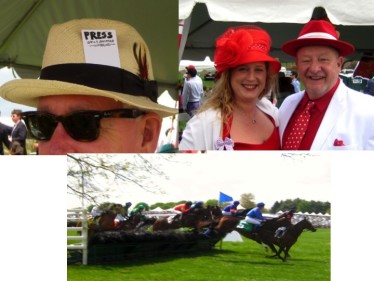
Copyright 2014 Vic Socotra
www.vicsocotra.com
Twitter: @jayare303
The Michelin Guide to Bird Farms
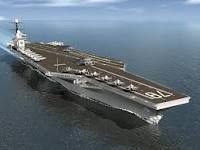
(USS Gerald R. Ford in an artist’s rendering. Cool ship. Image courtesy Popular Mechanics).
I have been watching the slow progress on the construction of the Navy’s newest aircraft carrier with a great deal of professional interest. There are some amazing technical innovations being incorporated into the design of the USS Gerald R. Ford (CVN-78) and it is, as anything designed to steam the world ocean, phenomenally expensive.
You can check out some of the innovations at this article in Popular Mechanics:
One of the most impressive aspects, to my mind, is the fact that there are no urinals on the ship. There is some other stuff, too, like the fact that it is not high-pressure steam that powers things, but rather electro-magnetic power. It occurred to me when reading about the electrical marvels, that the use of an Electromagnetic Pulse (EMP) weapon against an all-electric ship would render it a dumb and defenseless chunk of metal- but I am sure the Navy has taken that all into account.
Hahaha.
Anyway, that is a new thing for a lot of the usual suspects- we were accustomed to the oily steamy wisps that floated out of the catapult tracks, and coated everything with a thin film of oil. Everything.
The ships were all little cities, and they all had their individual quirks. As an average, most of us have six or seven ships in our lives. The Midway sailors, and those who served on the successor ships permanently home-ported in Japan are a special lot, since the ship, whichever one it happened to be, was America.
The discussion presented in the article tripped off a lot of bird farm memories.
One irascible shipmate chimed in that we sounded “like the Battleship admirals of the pre-Pearl Harbor days!!! Ahhhh….Battleship Row….ain’t she a sight to behold!”
Point taken, of course. Someone else suggested that we do a Michelin Guide for the bird farms: which ones could accomplish anything, no matter how hard, and others that had more chequered records- “floating roach hotels and unreliable platforms.” Zero Stars.
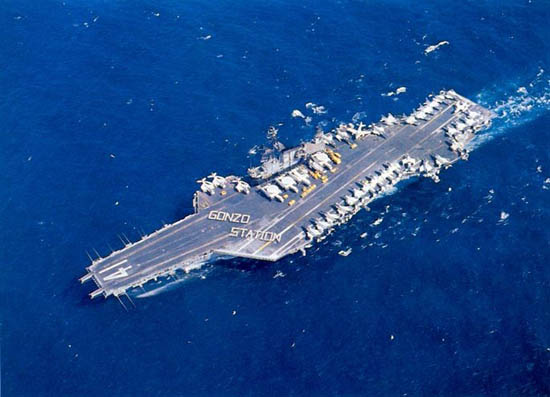
(USS Midway in the North Arabian Sea, 1979. Photo USN courtesy Chuck Cunningham).
A discerning shipmate summed up the experience nicely: “I have been on seven, including all three Midway class CVs, serving in air wing, ships company, and battle group staff intelligence billets—- though for three months I was the Training Department Head aboard Coral Sea. Carrier duty is exciting and professionally rewarding; these ship are all technologically marvelous in their own ways but some are better to live on then others. FDR, Coral Sea, and Ranger are at the bottom in no particular order (no stars) with Enterprise, Midway, Constellation, and Kitty Hawk pretty much in that order at the top with wide gap. The gap however from top group and the bottom was significant,” though I think all the latter group would warrant at least a star in the Michelin Guide.
No kidding- you could tell by the nicknames for some of the ships, though they could change based on who was in command: Shitty Kitty, Sorry Sarah, Handjob, Danger, Forest Fire where things stood with the great ships. Others had a sense of familiarity- O-Boat, Tico, Amerika-Jima, Connie. The ten newer ships- Nimitz class boats that were brand new when most of us were in the are now starting to arrive at the point in their service lives when extensive reactor-recoring is required.
They have much less quirky eccentricity than the old conventionally-powered ships, and more formality in their names, since they reflect actual people in their naming conventions.
Many of them proved it with cappuccino machines in the dirty-shirt wardrooms. All the Nimitz boats would get a star for comfort, though the smoking ban and the integration of mixed-sex crews made them social experiments as well, with all sorts of interesting aspects to life afloat.
The ages of my shipmates spans the Vietnam era to the current era, when every carrier (except JFK) went to The Show in SE Asia. We rode those ships (and crews) hard in those days and put them away wet.
One shipmate claims that “Kennedy was the best because they did everything flawlessly and you could do surgery in the engineering spaces; there were formal zone inspections every week with flashlight and white gloves. You haven’t lived until you draw the weapons storage spaces as your zone and climb down 8 decks from the main deck. Awesome storage-of course mostly empty.). If you were OOD and the 0800 launch didn’t have the first CAT stroke concurrent with the 8th bell – you could find yourself in deep kimchee. Her showboat reputation was deserved.“
“The others blur together, with the Midway getting a special nod for Japanese maintenance (and signage on the Flag Bridge) and that unbelievable Midway Magic–some incredible launch rates. You got me going!”
“Enterprise gets my top nod because Barney Kelly (later Admiral Kelly) was CO when I was embarked with CCG-3. Big radiated with his positive personality, leadership, and obvious competence. Constellation just after Stark and during Earnest Will was the best operating CV for that 6 month of any I was on her. 108 Days aboard Coral Maru during the Iranian Hostage crisis put a real strain on an already tired ship. And yes I went on the last cruise of the FDR twice! ! ! She made six more “last cruises” before being put out of her misery…”
Another shipmate- I worked for him twice- had a little more perspective:
“I am a Ticonderoga, Enterprise (two cruises, with a squadron, then CAG staff)), Hancock, Coral Sea, Constellation, and finally Midway Maru! A few days/weeks on others do not count. Coral Sea is at the bottom of my list. Hell, as the boot LT on CARGRU 3 I was sent to “look for” doors to our staterooms two weeks before our ’70 departure from Alameda. Not that we did not have fun…”
Of course, Tico and Hancock weren’t much better to live on, Enterprise had it all, but Midway…what can I say? My two years as ships company, how it operated, and all we did puts her in first place for me…
I have to agree with that assessment- Ma Midway was home for 23 months, 1978-80, and I had a chance to steam on seven or eight more, including most of the Nimitz Class boats (the West Coast ones, anyway) with a Med deployment on Forrestal.
It would be worth a longer treatment of the individual boats, but the truth of the matter is that most of these once-proud ships are razor blades now. They scrapped FDR and Coral Maru; are taking FID apart down in Texas this morning, They deliberately sunk O-Boat and America as artificial reefs and only Midway and Intrepid are safe for the moment, being memorial ships in San Diego and New York, respectively.
As one of the curmudgeons noted, “the CV/CVN has been the cornerstone of U.S. Naval power for over 70 years!!! While the aircraft and ships have improved dramatically, they still have some serious vulnerabilities… I wonder if we are blinded by “platform” love and nostalgia….can you imagine the HMS Victory (the best warship of 1805) taking on the Monitor and the other ironclads of the 1860s? How about the Merrimac taking on Jackie Fischer’s Dreadnoughts in the early 20th century? We are talking about that level of technological age spread.”
“I hope we (and more importantly, the current Navy leaders) are not surprised by new technologies and tactics we were unable to see or appreciate.”
We haven’t lost an aircraft carrier to hostile action in quite a while- the jeep carrier Bismark Sea was the last in 1945- but all things change. I guess we will see how the Ford Class performs. But I have to tell you, I think all of us would go back for one last deployment.
It was that cool.
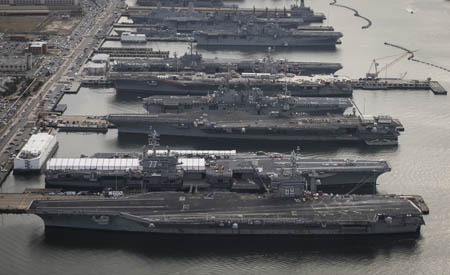
(Five CVNs and a couple big deck Amphibs in Norfolk, the World’s Largest Naval Operating Base. Photo USN)
Copyright 2014 Vic Socotra
www.vicsocotra.com
Twitter: @jayare303
Electrified
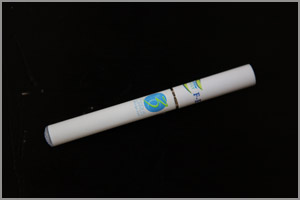
(This is an example of the White Cloud Cirrus III electronic cigarette. I have tried several versions, and this may be the best I have experienced. Photo White Cloud.)
The skies are blue, temperatures are up, and life (outside the hermetic seal of the Beltway) appears to be well worth living.
This is, by way of modest interest for me, the start of the 15th day of not smoking. I have to heavily caveat that fact- I am still addicted to nicotine, still love it in fact, but visiting a pal who is sensitive to smoke caused me to shift over to e-cigs for the duration of the trip.
At the 72 hour point, I realized that those pesky cold-turkey spiders were not crawling out of my skin, and I had detoxed from at least some of the more intrusive parts of the addiction. I decided to stay with it for another day or two. No big deal.
Having got that far, I have been taking it day by day since. I carry the placebo stick with me, and puff away on the vapor with equanimity in all sorts of places. I know this is an interim step, and that only, but the consequences of the transition are striking: I walk past the exiles puffing away and the smoke is acrid, penetrating- pervasive. Interesting.
I first got the fake cigarettes as a favor to my landlord. She asked if I could smoke near the windows, and regretted not having placed a non-smoking clause in the lease on the apartment in Big Pink. I had not smoked much in my old place- it was convenient enough to step out on the balcony even in the winter- but the two months of enforced confinement in bed recuperating from surgery made that a non-option.
Complying with the owner’s wishes was just one of the serial indignities of renting- but in the process of not smoking at my favorite place- at the keyboard- I discovered that the e-cigs really were not bad as a substitute.
I still have about a carton and a half of real smokes in the cupboard, but have thus far had no recourse to open a pack, step outside and actually light up.
I note the Nannies are attempting to regulate our electronic behavior as well. For reasons best known to themselves, since there is no discernable dissemination of anything bad, nor fire risk, nor anything else. It seems to demonstrate the contention of H.L. Menken, the departed Sage of Baltimore: “Puritanism: the haunting fear that someone, somewhere is having a good time.”
I suspect taxes are at the bottom of this newest wave of oppression from the New Puritans. It is enough to make me want to light up a Lucky.
Copyright 2014 Vic Socotra
www.vicsocotra.com
Twitter: @jayare303
Crumbling Bricks and Brittle Sticks
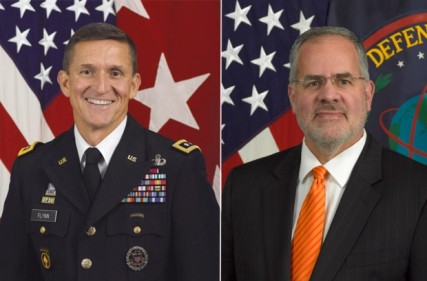
(The Director and Deputy Director of a major suburban combat support agency who have elected to retire this fall.)
“I have been to this movie before,” I declared firmly and put down my glass of happy hour white a little harder than normal for emphasis. “We completely screwed ourselves.”
“What are you raving about now?” growled old Jim.
“They just shit-canned the Director of the Agency where I used to work, and they got the Deputy Director, too. It is just like the end of the Cold War and the chaos of downsizing and re-organization to do more with less.”
Jim has been around the block in DC and he knows how things work. “Normally you do less with less.” He took a sip of Budweiser and said:
“Who’d they piss off?”
“I think it was everyone at the Agency, their boss at OSD, Mike, the Office of the Director of National Intelligence, the CIA and Congress in about that order.”
“Shouldn’t come as much of a surprise, then.”
“Well, it was still dramatic. I had to turn off my cell phone there were so many calls. There were rumors that it was a done deal late last year. He was trying to take DIA in a direction the rest of the Department didn’t want to go.”
“Where on earth was that?” asked Jon-without. He was drinking a bottle of imported beer, part of his strategy of trying to mix it up a little.
“The General wanted to take advantage of the budget pressures and the demand for a more adaptive agency to bring change and find efficiencies.” I said. “How is that for some buzz words.”
“DIA is a bloated bureaucracy with overstaffed analytical elements still focusing on requirements that have been overtaken by applications in technology,” said an anonymous fellow down the bar.
I looked in his direction and the man turned his gaze from our little group at the apex of the Amen Corner to the basket of Willow’s excellent fish and chips in front of him. There was a trench coat still wet from the pelting rain outside slung over the back of the stool.
“Are you from Langley,” I asked. The man shrugged.
“Close enough,” he said.
“The Deputy was one of you guys,” I said. “The Director of National Intelligence seemed to want one of his guys there, or maybe it was that the General did not want a career insider from the Agency as his Deputy.”
“I may have said too much,” the man said. I studied his profile as he took a bit of fish from the basket and dipped it in Tracy O’Grady’s home-made tartar sauce. “But trust me, no one in town thought we needed another clandestine service. The one at Langley should be enough, right?”
“I know he got the job because he proposed radical change to the way the national intelligence agencies supported forces in the field,” I said. “I used to go to the weekly VTCs at the Pentagon with the General when he was the top intel dog at the International Security Assistance Force in Afghanistan. Then we lost the contract and my Pentagon access badge got suspended. They duck-marched me out to South Parking and that ended my time in the Five-sided Adult Care Facility.”
“Must have been a sentimental moment,” said Jon-without.
“I will never forget it,” I said. “But I have to say that leaving the place was oddly liberating.”
“The General is probably feeling the same way,” growled Jim.
“They are letting him stay long enough to have the time-in-grade he needs to retire as a three star,” I said. “So it is not exactly like getting terminated with extreme predjudice.”
“Sure it is,” said the gray man down the bar. “Part of the agenda was to provide the SecDef with his own spies. That goes back to Rumsfeld’s time when he didn’t think Defense was getting adequate support from Langley.”
“Uncle Don did not trust anything that wasn’t under his control. In the meantime, the General was Stan McChrystal’s spook in Iraq and Afghanistan. Then he wrote that paper that said we needed to provide more intel guys on the ground at the battalion and brigade level, and less irrelevance from the national agencies. They rewarded him with command at the Agency.”
“I remember the line,” I said. “It was the Pottery Barn Rule. If you say something is broken you are rewarded with the opportunity to fix it.”
“Yeah. I remember hearing about when he arrived at the Agency and announced that if people were reluctant to embrace his agenda he would move them or fire them. I think he transferred like a hundred senior executives in the first two months he was there. Now the wars he was supposed to fix are over. I don’t know where that leaves you when they are taking the resources away.”
“Sounds like the stun-gun approach to management,” said Jon-without as Chanteuse Mary walked in, damp but not wilted.
“What are you reprobates talking about?” She asked, hopping on the stool next to Jim.
“Nothing important. Bureaucratic politics.”
“Is there anything else in this town?” she said with a smile.
“Yeah, I know,” I said. “But now the fun begins with who is next in the seat. I have heard a rumor….”
Brett the bartender alertly filled up my glass again before I could get to the part about how the DCSInt at Army was a strong candidate, and if she didn’t want the job, who would be in line after that to be elevated to take on the Agency. And what agenda might come with whoever it was.
The Gray Man down the bar threw a couple twenties on the bar- didn’t want a paper trail, I assume- and shrugged on his trench coat. He gave a crooked smile. “You kids have fun tonight,” he said, and walked off toward the rear entrance to the parking garage.
“What was all that about?” asked Jim, waving at Boomer to get another beer and a glass of the white for Mary.
“Faces and spaces,” I said. “More crumbling bricks and brittle sticks.”
“Clever,” said Jon-without. “I think maybe I will switch to vodka.”
Copyright 2014 Vic Socotra
www.vicsocotra.com
Twitter: @jayare303
